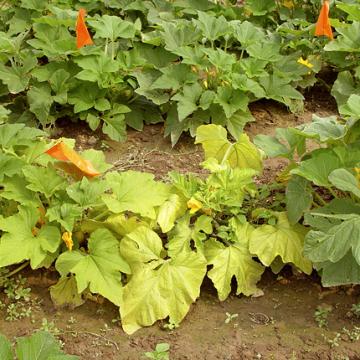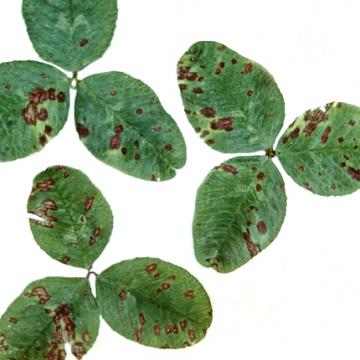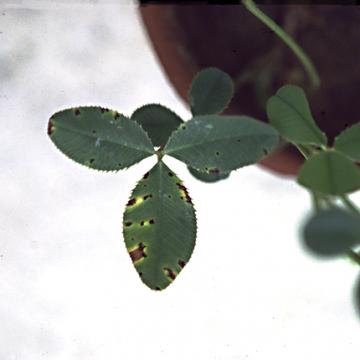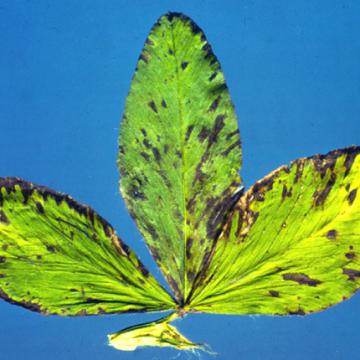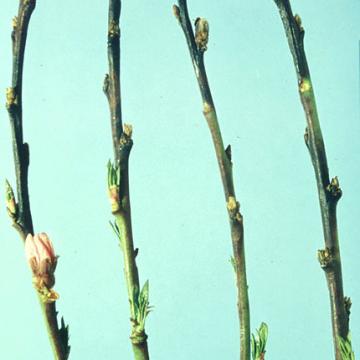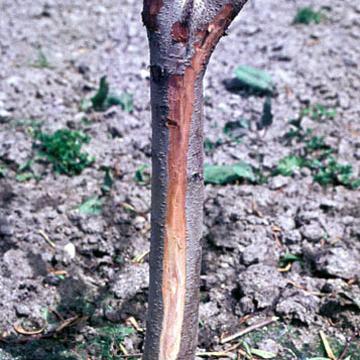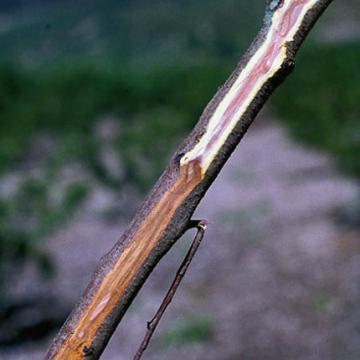DISEASE: Aster yellows
HOST: Squash
Diagnostic characteristics for the disease are yellowing of young leaves, proliferation of secondary shoots, and rigid erect habit. Leaves are misshapen and smaller than normal and have stiff, thick laminae.
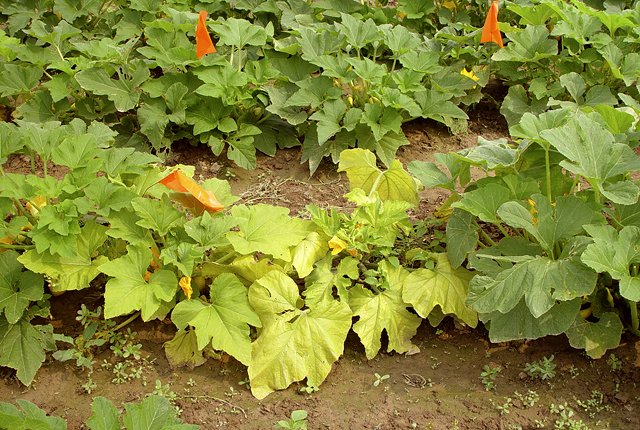
Aster yellows | Squash
DISEASE: Aster yellows
HOST: Squash (Cucurbita sp.)
PATHOGEN: 'Candidatus Phytoplasma asteris'
PATHOGEN SYNONYM: Phytoplasma Aster yellows group
SOURCE: S. Miller
DISEASE: Bacterial black leaf spot
HOST: Clover
White clover with brown necrotic spots.

Bacterial black leaf spot | Clover
DISEASE: Bacterial black leaf spot
HOST: Clover (Trifolium repens)
PATHOGEN: Burkholderia andropogonis
PATHOGEN SYNONYM: Pseudomonas andropogonis
SOURCE: M. Goto
DISEASE: Bacterial black leaf spot
HOST: Clover
White clover leaves with brownish spots and some yellowing occurring at the margins.

Bacterial black leaf spot | Clover
DISEASE: Bacterial black leaf spot
HOST: Clover (Trifolium repens)
PATHOGEN: Burkholderia andropogonis
PATHOGEN SYNONYM: Pseudomonas andropogonis
SOURCE: R. Gitaitis
DISEASE: Bacterial blight (Leaf spot)
HOST: Clover
Diseased leaf with elongated, reddish brown lesions, especially numerous on the margins.
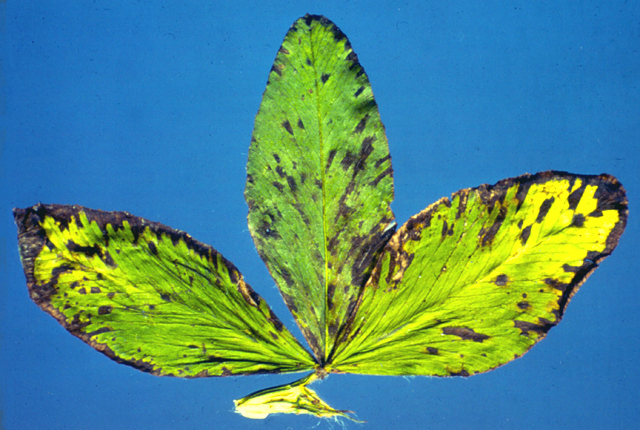
Bacterial blight (Leaf spot) | Clover
DISEASE: Bacterial blight (Leaf spot)
HOST: Clover (Trifolium alexandrinum)
PATHOGEN: Pseudomonas syringae pv. syringae
SOURCE: M. Shurtleff
DISEASE: Bacterial dieback of nectarine
HOST: Nectarine
Dark cankers on last year's twig. Symptoms of bacterial dieback of nectarine are identical to those of bacterial dieback of peach.
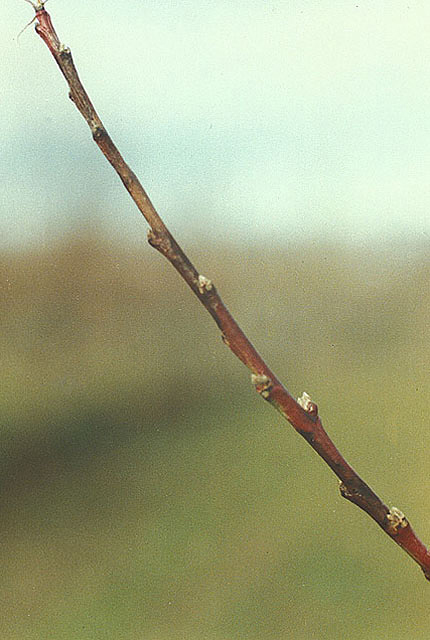
Bacterial dieback of nectarine | Nectarine
DISEASE: Bacterial dieback of nectarine
HOST: Nectarine (Prunus persica var. nucipersica)
PATHOGEN: Pseudomonas syringae pv. persicae
SOURCE: J. Young
DISEASE: Bacterial dieback of nectarine
HOST: Nectarine
Diseased young twigs.
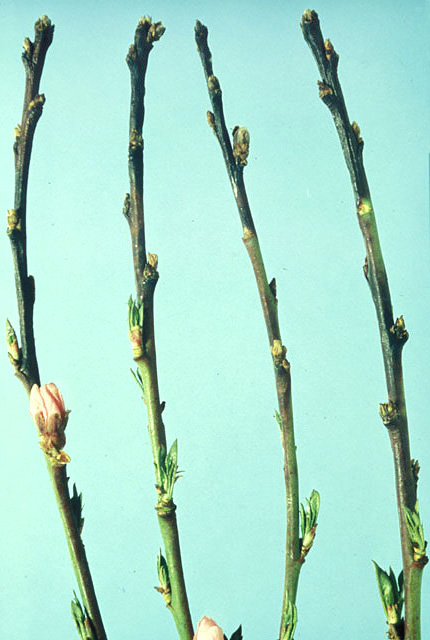
Bacterial dieback of nectarine | Nectarine
DISEASE: Bacterial dieback of nectarine
HOST: Nectarine (Prunus persica var. nucipersica)
PATHOGEN: Pseudomonas syringae pv. persicae
SOURCE: J. Young
DISEASE: Bacterial dieback of nectarine
HOST: Nectarine
Bacterial invasion of trunk caused reddish brown discolored area. Symptoms of bacterial dieback of nectarine are identical to those of bacterial dieback of peach.
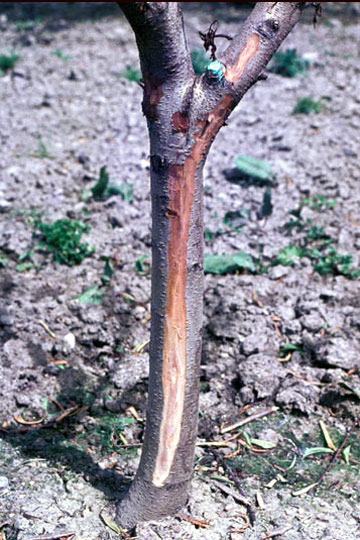
Bacterial dieback of nectarine | Nectarine
DISEASE: Bacterial dieback of nectarine
HOST: Nectarine (Prunus persica var. nucipersica)
PATHOGEN: Pseudomonas syringae pv. persicae
SOURCE: J. Young
DISEASE: Bacterial dieback of nectarine
HOST: Nectarine
Discolored vascular tissues and gummosis on infected twig.
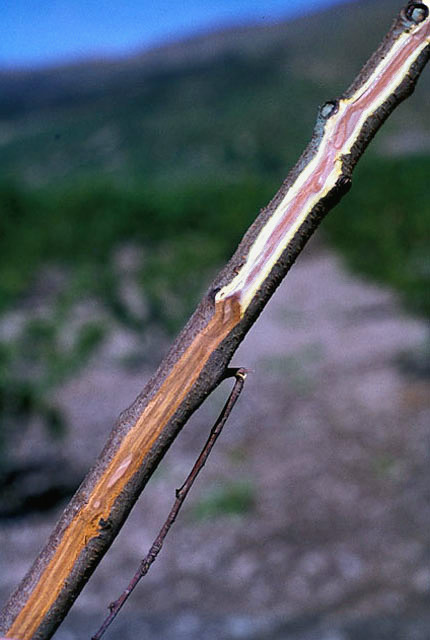
Bacterial dieback of nectarine | Nectarine
DISEASE: Bacterial dieback of nectarine
HOST: Nectarine (Prunus persica var. nucipersica)
PATHOGEN: Pseudomonas syringae pv. persicae
SOURCE: J. Young
DISEASE: Bacterial dieback of nectarine
HOST: Nectarine
Symptoms of the disease include leaf spots (top leaf). Similar appearing leaf spots may be caused by Xanthomonas arboricola pv. pruni (bottom leaf).
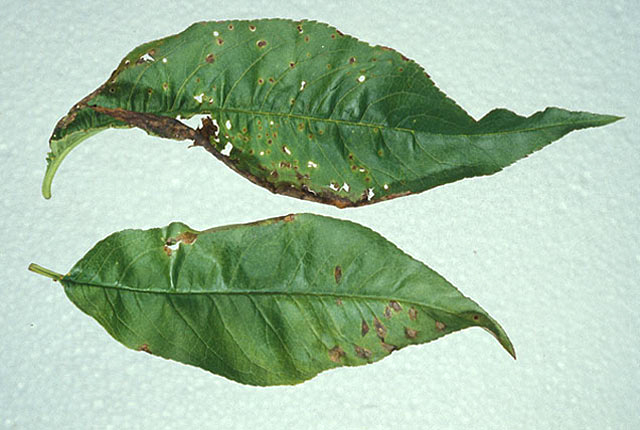
Bacterial dieback of nectarine | Nectarine
DISEASE: Bacterial dieback of nectarine
HOST: Nectarine (Prunus persica var. nucipersica)
PATHOGEN: Pseudomonas syringae pv. persicae
SOURCE: J. Young


